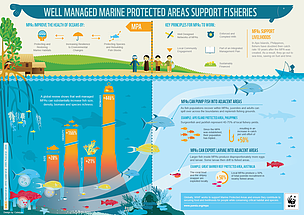LowIncomeCountries
Challenges Related to Management in Low Income Countries
Threats to Reefs in Low Income Countries
Threats Related to Climate Change
Processes such as coral bleaching, ocean acidification, and ocean warming have harsh consequences in all marine environments, not just low or high income countries.[1]
Carbon Dioxide Emissions
CO2 is a greenhouse gas that affects marine environments not only through ocean warming but also through ocean acidification. As CO2 concentrations in the atmosphere increase, so does the dissolved CO2 in the ocean. [2]
The CO2 emissions of low-income countries are not nearly as high as those of high-income countries, but shoreline development can directly fuel these processes.[3] [4]
Other Greenhouse Gas Emissions
Other greenhouse gases include by-product emissions of hydrofluorocarbons, perfluorocarbons, and sulfur hexafluoride. [3]
These gases contribute to rising temperatures globally, including those of the ocean.[5]
Additionally, monitoring and regulating emissions is difficult to do, especially on a country-to-country basis.[5]
Even if low-income countries don’t produce as much CO2, they are still producing hundreds of thousands of tons of other greenhouse gases. [3]
Human-induced Threats to Coral Reefs
Overfishing and Destructive Fishing Practices
Many countries have municipal areas solely for local fisherman. [6]
However, commercial fisheries encroach on the outskirts of these areas because a lack of protection and enforcement. [6]
Commercial fisheries not only use methods that are damaging to reefs, such as trawling, but also use methods that are more effective at catching large numbers of fish. [5]
In turn, fisherfolk who depend on fishing for a living must turn to destructive fishing practices. [6]
They use dynamite and cyanide fishing which can irreversibly decimate coral and fish populations. [6]
Coral Mining
Coral is incinerated in a kiln and the resulting powder is used for mortar. [7]
Initially, coastal communities collected pieces of coral that washed up on the shore but the demand for such resources increased drastically in the 1970’s and 1980’s because the lime in coral was found to be very useful for construction, which led to more invasive practices such as coral breaking and mining. [7]
By the 1990’s coral accounted for ninety percent of lime used for construction purposes and thousands of tons of coral were being mined every year. [7]
Although there are regulations against such practices, enforcement is limited if this is the primary source of income for coastal communities. [8]
Current Reef Management in Low Income Countries
Marine Protected Areas and Reserves
When a portion of coral reef is set aside for protection, there is a doubly positive effect: the particular area recovers and areas surrounding or associated with MPA mirror that recovery. [9] Studies show that protecting reefs in such a way not only increases biomass, but also species diversity and fish size, as on Apo Island in the Philippines. [9] The no-take reserve and sanctuary were established in the 1970’s after destructive fishing methods wreaked havoc on Apo and throughout the Philippines. [6] These policies were so successful that The Apo Island Sanctuary has been used as a model for research and for demonstration of long-term benefits of such protection. [9] [6]

Foreseeable Barriers to Successful Reef Management
Despite rampant overfishing to the point of being unprofitable, governments continue to subsidize harmful fishing practices. [8] There continue to be political barriers to regulations on fishing techniques, catch limit, and illegal fishing. [10]
Additionally, there is so little area covered by Marine Protected Areas--less than 4% of oceans are declared as MPAs with 90% of those areas being open to fishing. [9]
Success in Reef Management
What makes reef management successful?
An engaged and tight-knit community dedicated to upkeep. [9]
Dedicated supervision and enforcement by local people and a plan for sustainability made by inhabitants of the island that includes education of local populations.[6]
References
- ↑ "Threats to Corals and Coral Reefs." The Coral Digest. N.p., n.d. Web. 10 Apr. 2016. <http://coraldigest.org/index.php?title=Threats>.
- ↑ "Acidification." The Coral Digest. N.p., n.d. Web. 10 Apr. 2016. <http://coraldigest.org/index.php?title=Acidification>.
- ↑ 3.0 3.1 3.2 The World Bank, 2016. Web. 10 Apr. 2016. <http://data.worldbank.org/indicator/EN.ATM.GHGO.KT.CE/countries/XM-XR-XS?display=graph>.
- ↑ Riedmiller, Sibylle. "Private Sector Management of Marine Protected Areas: The Chumbe Island Coral Park Project in Zanzibar/Tanzania." Environment and Development in Coastal Regions and in Small Islands, n.d. Web. 10 Apr. 2016. <http://www.unesco.org/csi/pub/papers2/mapp14.htm>.
- ↑ 5.0 5.1 5.2 Bertness, Mark D., John F. Bruno, Brian R. Silliman, and John J. Stachowicz. Marine Community Ecology and Conservation. N.p.: Sinauer Associates, 2013. Print.
- ↑ 6.0 6.1 6.2 6.3 6.4 6.5 6.6 Dalby, Janne, and Thomas K. Sorensen. "Coral Reef Resource Management in the Philippines." Thesis. University of Copenhagen Botanical Institute, 2002. Web. 10 Apr. 2016. <http://oneocean.org/download/db_files/Coral_Reef_Resource_Management_in_the_PhilippinesMPAs.pdf>.
- ↑ 7.0 7.1 7.2 Rajasuriya, Arjan, M.W. R. N. De Silva, and Marcus C. Ohman. "Coral Reefs of Sri Lanka: Human Disturbance and Management Issues." N.p., n.d. Web. 10 Apr. 2016. <http://eebweb.arizona.edu/courses/ecol206/Rajasuriya%20et%20al.pdf>.
- ↑ 8.0 8.1 "Overfishing." WorldWildlife.org. World Wildlife Fund, n.d. Web. 10 Apr. 2016. <http://www.worldwildlife.org/threats/overfishing>.
- ↑ 9.0 9.1 9.2 9.3 9.4 "Marine Protected Areas." WWF Global. World Wide Fund for Nature, 2016. Web. 10 Apr. 2016. <http://wwf.panda.org/what_we_do/how_we_work/conservation/marine/solutions/protection/protected_areas/>.
- ↑ Hale, L.Z. and Kumin, E. 1992. Implementing a Coastal Resources Management Policy, the Case of Prohibiting Coral Mining in Sri Lanka. Coastal Resources Centre of the University of Rhode Island, USA, 30 pp.